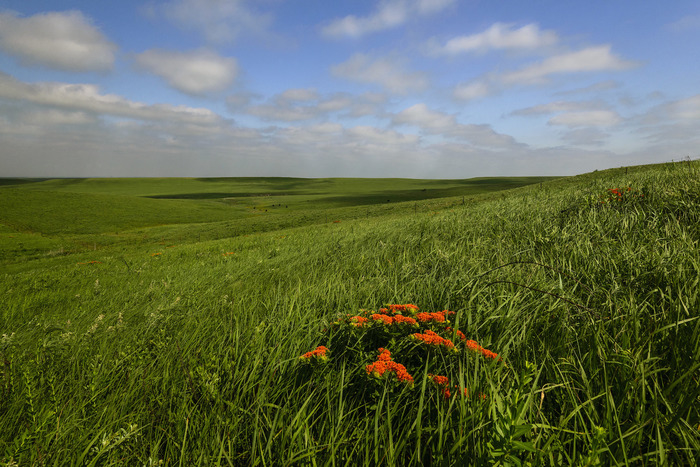Grasses & Wildflowers of the Prairie

A prairie ecosystem is composed primarily of grasses and wildflowers (“forbs”). A healthy prairie normally doesn’t have many trees or shrubs, except where there might be permanent water near a stream or a pond, for example.
Prairies evolved in the center of continents, where periodic droughts are common. The thick layer of fibrous roots in the first foot of soil act like a sponge to quickly absorb water when it does rain. When the prairie is dry native prairie plants go dormant and much of leaves and stems that are aboveground turn yellow. When plants are dormant they aren’t dead, they are simply saving water and food by shutting down photosynthesis and growth. Starch and water are stored in below-ground roots and stems and the plant simply waits for rain before starting to grow again. Grasses and their thick roots are uniquely suited for this type of lifestyle.
Many trees with taproot systems will die if they don’t get a steady supply of water, which is why most trees die before they get established on a prairie. However, if a tree lives long enough for the roots to reach groundwater then they may survive. Fire is one tool that prairie managers can use to kill trees before their roots grow deep enough to reach groundwater.
There is an annual predictable schedule of blooms of the prairie plants – the study of which is called “phenology”. Some plants bloom very early in the spring, like violets and ground plum. The milkweeds begin blooming in May and the purple coneflower will be blooming in June. Western ironweed will bloom in July and the goldenrods start blooming in August. The tallgrasses, like big bluestem will begin to produce seed heads in August and the grasses will reach their maximum height for the first time in September. One can look at a prairie landscape from the Flint Hills and recognize the date, or at least the season, if you can identify the flowers or grasses that are blooming.
